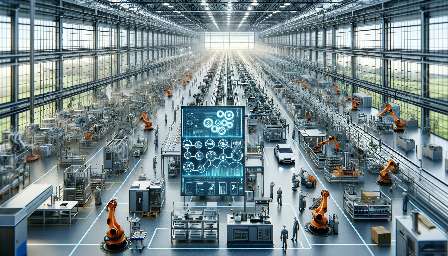In today's dynamic manufacturing environment, ensuring high-quality products and efficient processes is vital, and quality control plays a crucial role. In this comprehensive guide, we will explore the principles, tools, and benefits of quality control in the context of modern manufacturing, while also examining its relevance to facility layout.
The Significance of Quality Control in Manufacturing
Quality control is an essential part of the manufacturing process that focuses on maintaining product quality to meet customer requirements. It involves monitoring, inspecting, and testing products to identify defects and ensure adherence to standards. By implementing robust quality control measures, manufacturing companies can enhance customer satisfaction, minimize waste, and drive overall operational efficiency.
The Principles of Quality Control
At the core of quality control lie several fundamental principles, including:
- Customer Focus: Understanding and meeting customer expectations regarding product quality.
- Process Improvement: Continuous enhancement of manufacturing processes to eliminate defects and variations.
- Employee Involvement: Engaging employees at all levels to contribute to quality initiatives and problem-solving.
- Data-Driven Decision Making: Using statistical and analytical tools to make informed decisions about quality improvement.
Tools and Techniques of Quality Control
Quality control employs an array of tools and techniques to assess and improve product quality, such as:
- Statistical Process Control (SPC): Utilizing statistical methods to monitor and control processes, facilitating the detection of variations and trends.
- Root Cause Analysis: Identifying the underlying causes of quality issues and implementing corrective actions to prevent their recurrence.
- Quality Management Systems: Implementing robust systems, such as ISO 9001, to standardize processes and ensure compliance with quality standards.
- Failure Mode and Effects Analysis (FMEA): Pre-emptively identifying potential failure modes in products and processes to mitigate risks.
Benefits of Quality Control
Effective quality control yields various benefits for manufacturing operations:
- Cost Reduction: Minimizing rework and waste through early defect detection results in cost savings.
- Enhanced Reputation: Consistently delivering high-quality products builds trust and goodwill with customers and stakeholders.
- Compliance and Standards Adherence: Ensuring conformity to regulatory standards and industry-specific requirements safeguards against legal and reputational risks.
- Competitive Advantage: Meeting or exceeding quality expectations gives companies an edge in the market.
Integration with Facility Layout
The layout of a manufacturing facility significantly impacts the efficiency of production processes and, consequently, product quality. Optimal facility layout design considers the flow of materials, equipment placement, and spatial organization, all of which can influence quality control measures. By integrating quality control considerations into facility layout planning, manufacturers can further enhance their ability to deliver high-quality products.
Factors Influencing Facility Layout for Quality Control
Key factors that influence facility layout for effective quality control include:
- Workflow Optimization: Arranging equipment and workstations to minimize material handling and streamline production workflows.
- Space Utilization: Maximizing the use of available space to facilitate efficient movement of materials and personnel.
- Quality Inspection Stations: Strategically locating inspection points within the layout to ensure timely and thorough quality assessments.
- Ergonomics and Safety: Designing layouts that prioritize worker safety and comfort to minimize human error and improve quality.
Technology and Automation in Facility Layout for Quality Control
Modern manufacturing facilities increasingly leverage technology and automation to optimize facility layout for quality control:
- Robotics and Automated Guided Vehicles (AGVs): Deploying robotics and AGVs for material handling and movement, reducing the risk of damage and contamination while enhancing quality control.
- IoT-Enabled Sensors: Integrating sensors to monitor equipment performance, environmental conditions, and product quality in real time.
- Computer-Aided Design (CAD): Utilizing CAD software to simulate and optimize facility layouts, considering quality control requirements.
- Simulation and Modeling: Using digital simulations to assess the impact of layout changes on quality control processes before implementation.
Quality Control in Manufacturing: A Continuous Improvement Journey
Effective quality control in manufacturing is not a one-time effort but a continuous improvement journey. By embracing a culture of quality and integrating quality control principles with facility layout and advanced manufacturing techniques, companies can achieve sustained excellence and competitive advantage in the market.


